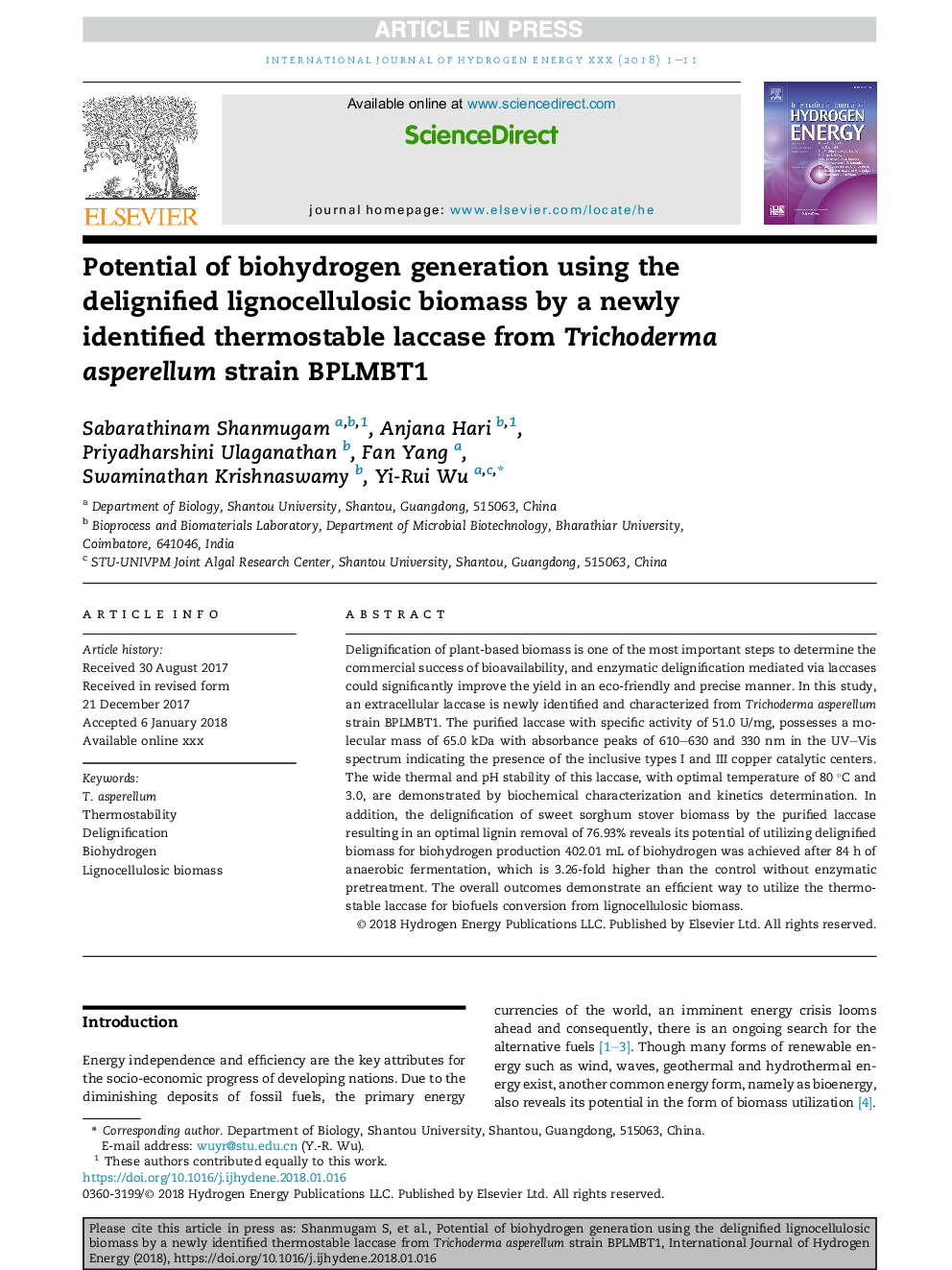| Article ID | Journal | Published Year | Pages | File Type |
|---|---|---|---|---|
| 7707566 | International Journal of Hydrogen Energy | 2018 | 11 Pages |
Abstract
Delignification of plant-based biomass is one of the most important steps to determine the commercial success of bioavailability, and enzymatic delignification mediated via laccases could significantly improve the yield in an eco-friendly and precise manner. In this study, an extracellular laccase is newly identified and characterized from Trichoderma asperellum strain BPLMBT1. The purified laccase with specific activity of 51.0 U/mg, possesses a molecular mass of 65.0 kDa with absorbance peaks of 610-630 and 330 nm in the UV-Vis spectrum indicating the presence of the inclusive types I and III copper catalytic centers. The wide thermal and pH stability of this laccase, with optimal temperature of 80 °C and 3.0, are demonstrated by biochemical characterization and kinetics determination. In addition, the delignification of sweet sorghum stover biomass by the purified laccase resulting in an optimal lignin removal of 76.93% reveals its potential of utilizing delignified biomass for biohydrogen production 402.01 mL of biohydrogen was achieved after 84 h of anaerobic fermentation, which is 3.26-fold higher than the control without enzymatic pretreatment. The overall outcomes demonstrate an efficient way to utilize the thermostable laccase for biofuels conversion from lignocellulosic biomass.
Related Topics
Physical Sciences and Engineering
Chemistry
Electrochemistry
Authors
Sabarathinam Shanmugam, Anjana Hari, Priyadharshini Ulaganathan, Fan Yang, Swaminathan Krishnaswamy, Yi-Rui Wu,
